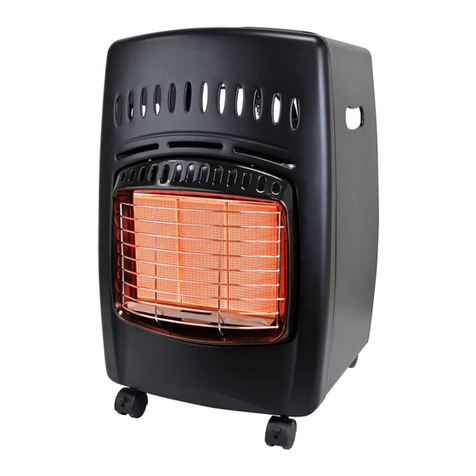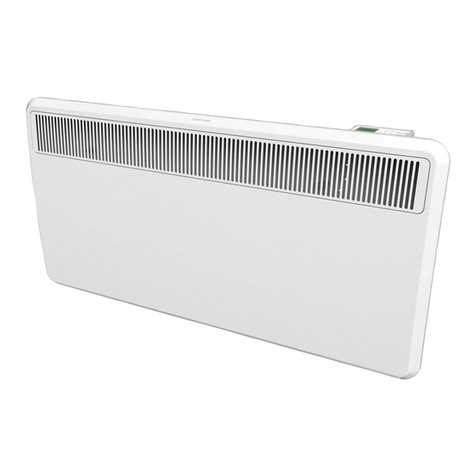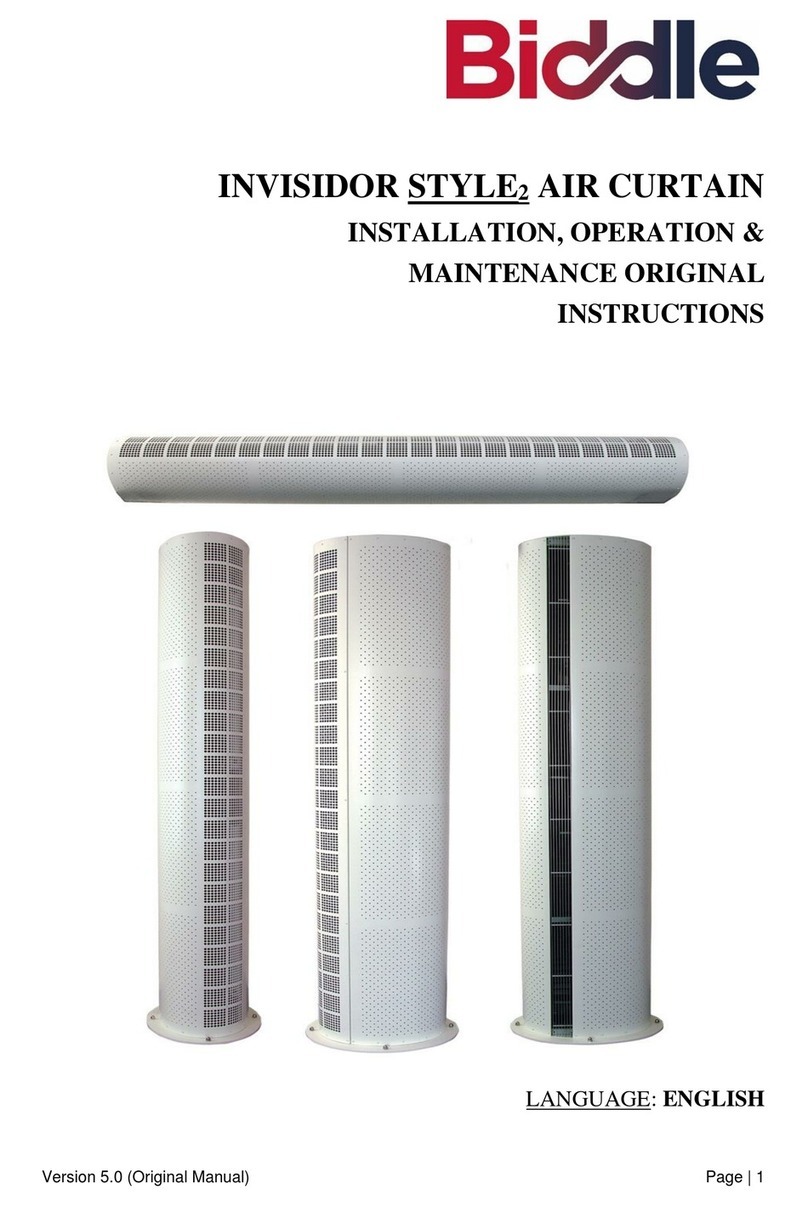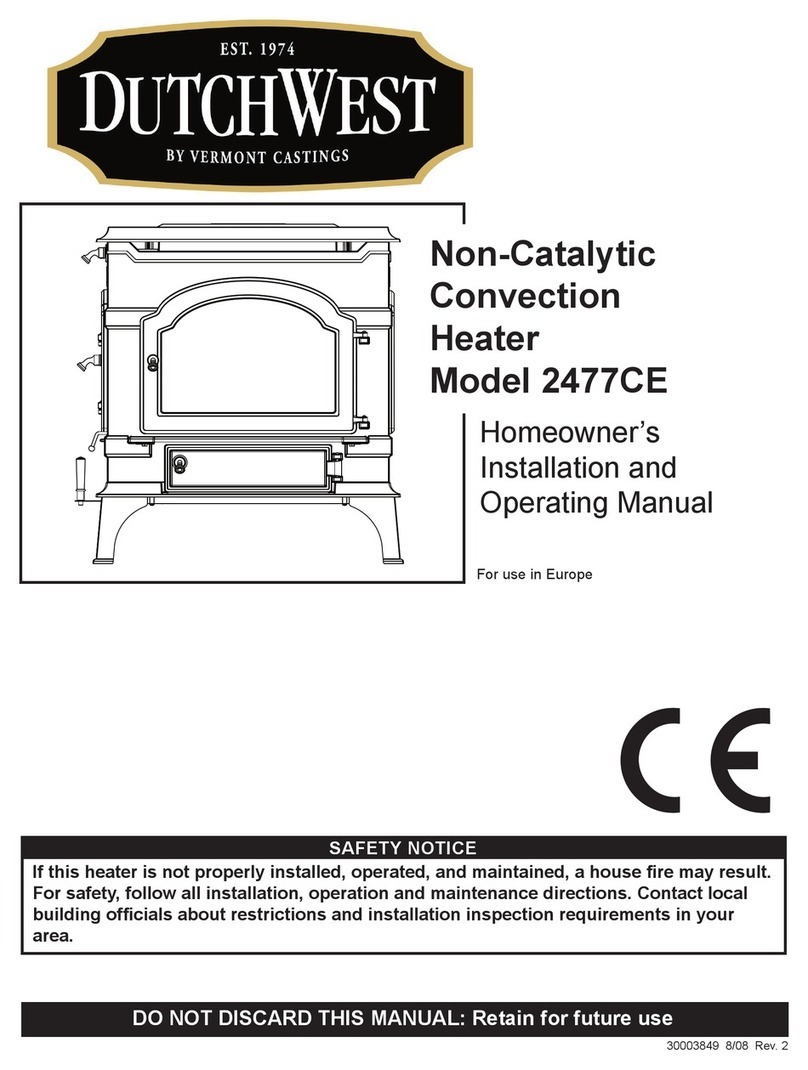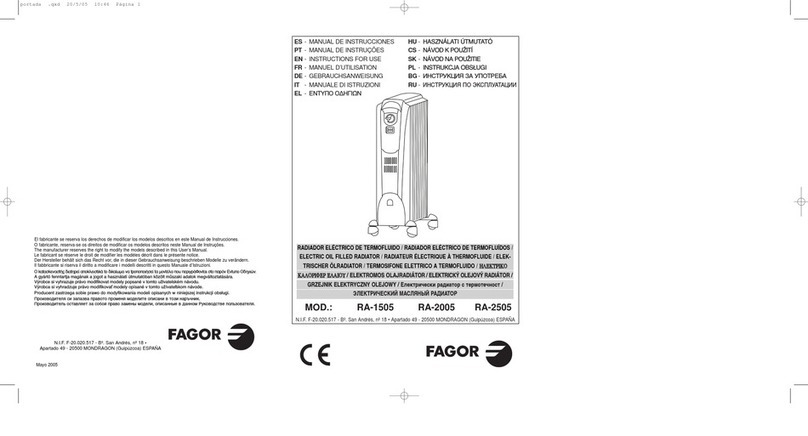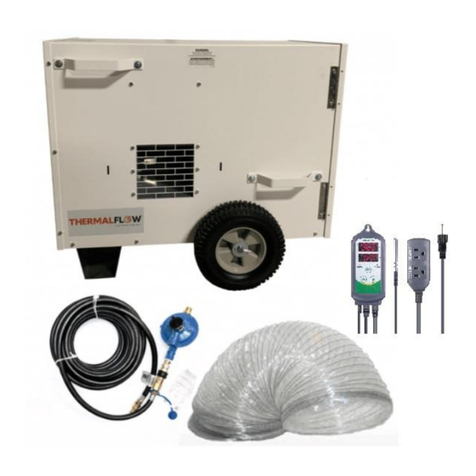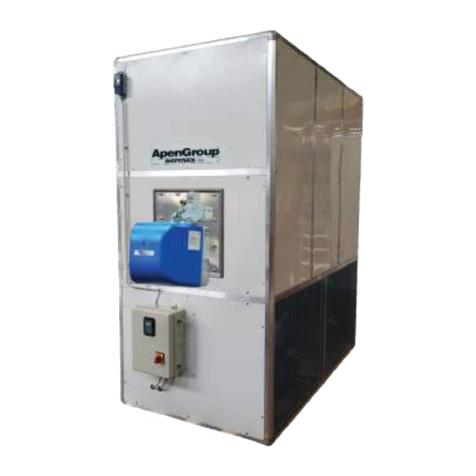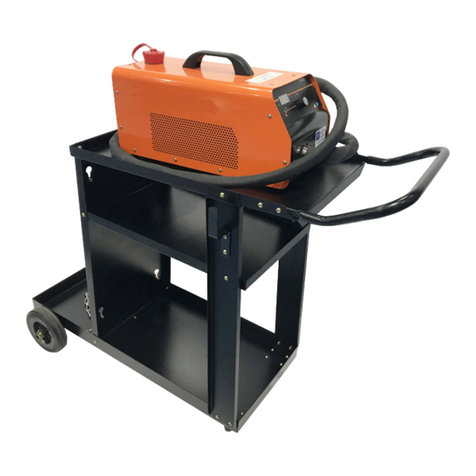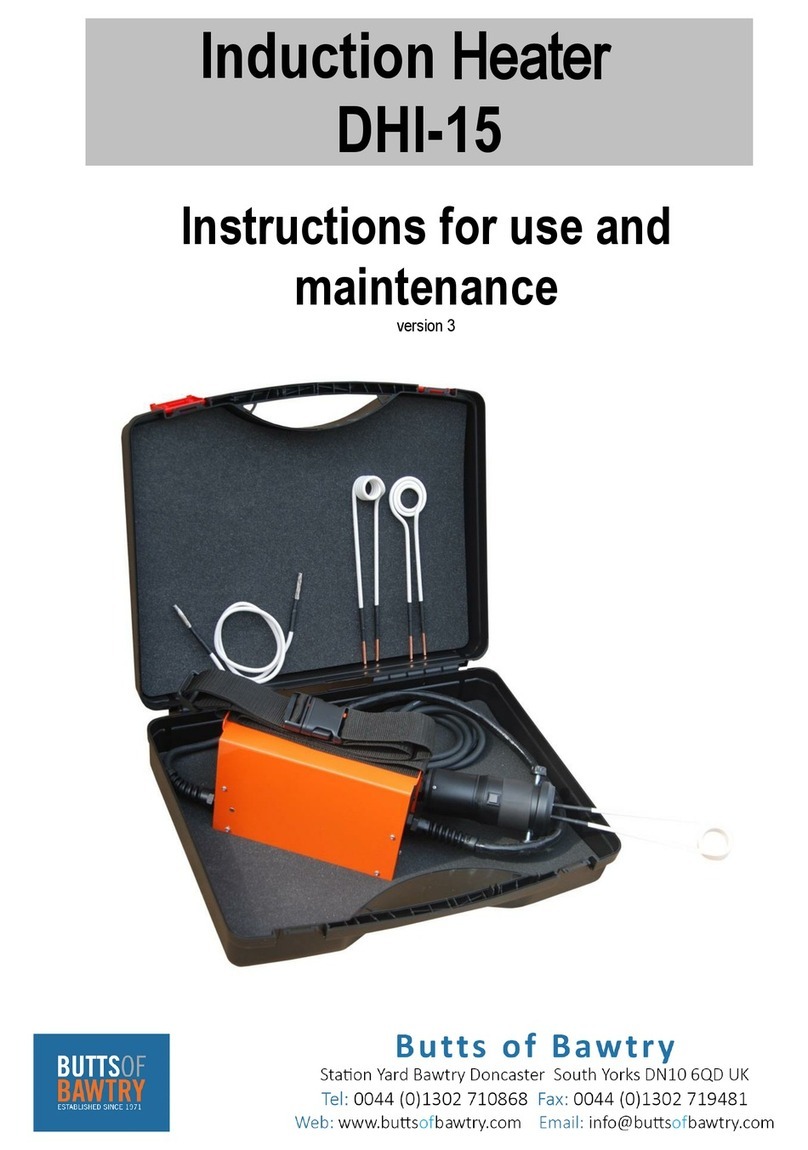
6
Unpacking
1. Remove heater from carton.
2. Remove all protective material which may have been
applied to the heater forshipment.
3. Check the heater for possible shipping damage. If any
damage is found immediately contact themanufacturer
NOTE: Save the box and packaging materials for future
storage.
Assembly
1、Put the wheel supports to the fuel tank holes,Insert screws
in the holes and tighten screws securely with screw driver
2、Insert the axle to the wheel supports hole,insert
wheels ,put on axle cap and wheel cap。
3、Put the handle and foot to the fuel tank holes ,Insert
screws in the holes and tighten screws securely with screw
driver . see Figure 3.
Figure 3. Handle and wheel mounting,
Operation
For optimal performance of this heater, it is strongly
suggested that 1-K kerosene be used. 1-K kerosene has
been refined to virtually eliminate contaminants, such as
sulfur, which can cause a rotten egg odor during the
operation of the heater. However, #1 or #2 fuel oil (diesel fuel)
may also be used if 1-K kerosene is not available. Be advised
that these fuels do not burn as clean as 1-K kerosene, and
care should be taken to provide more fresh airventilation
to accommodate any added contaminants that may be added
to the heated space. Using diesel fuel can cause excess soot
production. DO NOT use any fuel that is not approved above.
NOTE: Kerosene should only be stored in a blue container
that is clearly marked “kerosene”. Never store kerosene in a
red container. Red is associated with gasoline.
- NEVER store kerosene in the living space. Kerosene should
be stored in a well ventilated area outside the livingarea.
- NEVER use fuel such as gasoline, benzene, alcohol, white
gas, camp stove fuel, paint thinners, or other oil compounds
in this heater (THESE ARE VOLATILE FUELS THAT CAN
CAUSE A FIRE OR EXPLOSION).
- NEVER store kerosene in direct sunlight or near a source of
heat.
- NEVER use kerosene that has been stored from one
season to the next. Kerosene deteriorates over time. OLD
KEROSENE WILL NOT BURN PROPERLY IN THIS
HEATER.
- Use 1-K kerosene in this heater. #1 fuel is asuitable
substitute.
THEORY OF OPERATION
Fuel System: This heater is equipped with an air pump that
operates off of the electric motor. The pump forces air
through the air line connected to the fuel tank, drawing fuel to
the nozzle in the burner head. Air also passes through the
nozzle where it mixes with the fuel and is sprayed into the
combustion chamber in a fine mist.
Quick-Fire Ignition: A transformer sends high voltage to a
two pronged spark plug. The spark ignites the fuel/air mixture
as it is sprayed into the combustion chamber.
Air System: A fan is turned by the heavy duty motor, which
forces air around and into the combustion chamber, where it
is super-heated and forced out the front of the chamber.
Temperature Limit Control: This heater is equipped with a
Temperature Limit Control designed to turn the heater off
should the internal temperature rise to an unsafe level. If this
device activates and turns your heater off, it may require
service. Once the temperature falls below the reset
temperature, you will be able to start your heater.
Electrical System Protection: The heaters’ electrical
system is protected by a circuit breaker that protects the
system components
from damage. If the heater fails, check the fuse first, and
replace if necessary.
Flame Sensor: The heater uses a photocell to “see” the
flame in the combustion chamber. Should the flame
extinguish, the sensor will stop electrical current and the
heater will shut off.
Figure 4. Theory of Operation
FUELING THE HEATER
It is always a good idea to fire the heater outdoors for the fist
time. This will allow any oils used in the manufacturing
process to be burned off in a safe environment. This initial
burn should last at least 10 minutes
VENTILATION
Risk of indoor air pollution. Use heater only in well
ventilated areas.
NEVER REFUEL THIS HEATER WHILE
IT IS HOT OR OPERATING. FIRE OR
EXPLOSION COULD RESULT.
NEVER FILL THE FUEL TANK INDOORS.
ALWAYS FILL THE TANK OUTDOORS. BE SURE THAT
THE HEATER IS ON LEVEL GROUND WHEN FUELING,
AND NEVER OVERFILL THE FUEL TANK.

